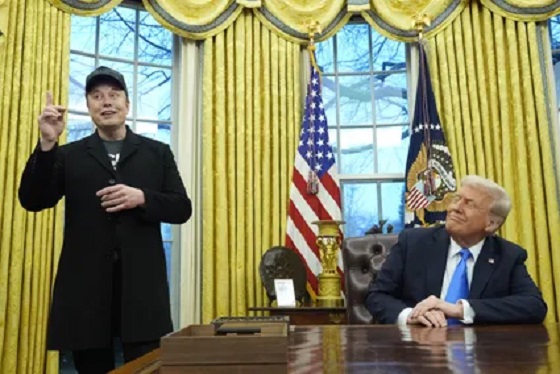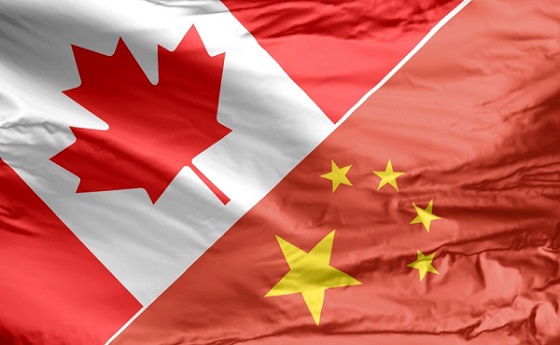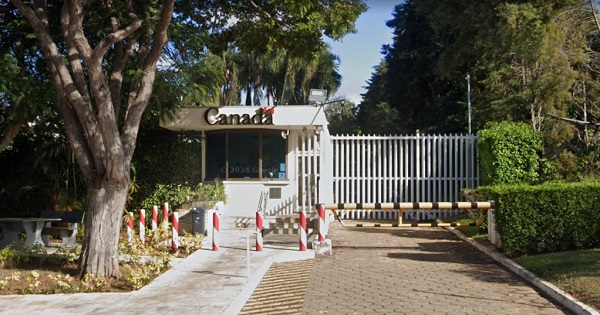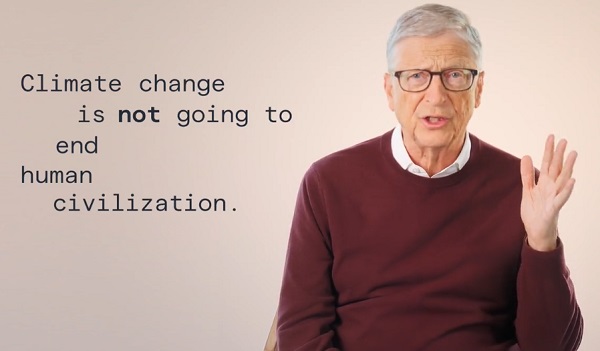Economy
Massive deficits send debt interest charges soaring

News release from the Canadian Taxpayers Federation
Author: Franco Terrazzano
The Canadian Taxpayers Federation is criticizing the federal government’s 2024 budget for hiking taxes, increasing spending and allowing debt interest charges to eat up $54 billion of the budget.
“Debt interest charges are costing taxpayers more than a billion dollars every week,” said Franco Terrazzano, CTF Federal Director. “Massive deficits mean interest charges will cost taxpayers more than the feds send to the provinces in health transfers this year.
“The Trudeau government says it wants fairness for every generation, but doubling the debt isn’t fair for Canadians’ kids and grandkids.”
Debt interest charges will cost taxpayers $54 billion this year, which is more than the federal government will send to the provinces in health transfers.
The deficit will total $40 billion this year. There is no plan to balance the budget.
The debt will total more than $1.2 trillion this year. When Prime Minister Justin Trudeau first took power, the debt was $616 billion. That means the Trudeau government will be responsible for doubling the national debt.
“Finance Minister Chrystia Freeland promised Canadians she would find savings, but when you increase spending by more than $30 billion in one year, you’re saving money wrong,” Terrazzano said. “This government could win the lottery every day and it would still max out its credit card.”
Spending this year is increasing by $37.1 billion, from $497.5 billion to $534.6 billion. Budget 2024 also increases capital gains taxes.
“This government has no plan to balance the budget or save money,” Terrazzano said. “This government’s only plan is to take as much money from taxpayers as it can.”
Business
Trump’s Tariffs Have Not Caused Economy To Collapse


From the Daily Caller News Foundation
By Mark Simon
The APEC Summit in Korea last week marked a pivotal moment for U.S. trade policy, delivering tangible wins for American interests. Solid deals were struck with South Korea, while the U.S. and China de-escalated their long-simmering trade war—a clear positive for President Trump. In the chaotic world of Donald Trump, such normalcy disappointed the news media and foreign policy pundits, who grumbled that the event lacked the drama of a disaster.
Yet, as Trump departed Busan, a deeper transformation unfolded, largely overlooked by observers. In just two days, President Trump orchestrated the most significant shift in U.S. trade strategy since China’s 2001 entry into the World Trade Organization (WTO).
The real triumph? Widespread acceptance by Asian trading partners of U.S. tariffs as a cornerstone of a reimagined American economic model. This acceptance dismantles nearly a century of unwavering belief in low tariffs as the unassailable path to global prosperity.
Trump’s tariff approach disrupts the post-World War II global trading system, particularly the U.S.-championed free-trade orthodoxy embraced by both parties for over 50 years. By wielding tariffs effectively, Trump challenges the free-market gospel enshrined in the WTO and echoed by World Economic Forum elites and corporate-sponsored Washington think tanks like AEI and CATO, which decry tariffs as heresy.
At APEC, there was no fiery backlash—only quiet nods to moderate tariffs as fixtures in the evolving economic order. Leaders from across the Asia-Pacific assessed the tariffs’ impacts and moved forward without spectacle, signaling a pragmatic pivot toward Trump’s view of international commerce.
Historically, tariff reductions in Asia stemmed from U.S. pressure to open markets. Mercantilist instincts run deep in most Asian governments—except in freewheeling Hong Kong and Singapore. These nations, built on exports inside protected markets, grasp how tariffs can revitalize U.S. manufacturing and bolster federal revenue. Unlike America’s one-sided openness to Asian imports, Trump’s reciprocity feels like overdue fairness.
As a former free-market purist who once decried tariffs, I initially missed their nuance in Trump’s arsenal. Tariffs impose costs, but the genius lies in offsetting them strategically. Trump’s aggressive deregulation, sweeping tax reforms, and drive for rock-bottom domestic energy prices mitigate burdens and generate a net economic surge—one that Asian leaders implicitly endorsed.
This “internal free-market trio” forms the bedrock of the new U.S. paradigm: moderate tariffs generate revenue and incentivize factory repatriation; deregulation slashes red tape; tax cuts keep capital flowing competitively; and abundant, cheap energy undercuts foreign advantages.
Together, they magnetize global investment, upending a century of free-trade dogma. Energy dominance is key. Through promotion of domestic oil, gas, and renewables, Trump has driven U.S. energy costs 30–50% below those in Europe or much of Asia. For capital-intensive sectors like steel, semiconductors, and electric vehicles, this is structural superiority, not subsidy. Layer on the 2017 Tax Cuts and Jobs Act—slashing the corporate rate to 21% and allowing immediate capital expensing—and the math tilts toward U.S. production. Tariffs may raise import prices by 20–30%, but deregulation accelerates cost-cutting, while energy savings absorb part of the hit.
Critics claim tariffs ravaged the economy post-2018, but COVID-19, not tariffs, triggered the downturn. Trump’s initial round was a successful pilot, extended by Biden—yet without Trump’s deregulation and energy surge, the tariffs became un-offset weight. Blanket cost hikes under Biden stifled growth; Trump’s selective offsets ensure expansion.
America’s edge sharpens as rivals falter. Europe, shackled by leftist policies, environmental mandates, and the Ukraine quagmire, hemorrhages capital to the U.S. In North Asia—China, Korea, Japan, Taiwan—demographic headwinds make investments unappealing compared to North America’s burgeoning market. Aging populations and shrinking workforces amplify this disparity.
APEC underscored America as a vibrant, tariff-protected haven primed for onshoring. Amid Asia’s labor crunch, nations view the U.S. as an investment beacon, mirroring Japan’s model: a high-value exporter offloading low-end manufacturing while retaining competitiveness. Summit chatter revealed minimal tariff gripes. China voiced tepid concerns over escalations, but these seemed rhetorical—testing boundaries rather than igniting conflict.
To free-trade zealots, Trump’s heresy is demolishing sacred economic theory. Past protectionists erred by isolating tariffs without cost-lowering measures. Trump integrates them: selective duties paired with deregulation, technological leaps, and economic decentralization beyond urban centers.
In equilibrium, tariffs harvest revenue and reclaim jobs, capitalizing on America’s fiscal and regulatory advantages. Trump’s blueprint restores balance to free trade, honoring national sovereignty while exposing borderless markets’ perils. It proves moderated protectionism can ignite growth, spur innovation, and draw capital—heralding a bolder, self-reliant American century.
Mark Simon is former group director for Next Digital, parent company for Apple Daily, the leading pro-democracy newspaper in Hong Kong until it was forced to close in 2021.
Business
Carney government should retire misleading ‘G7’ talking point on economic growth

From the Fraser Institute
By Ben Eisen and Milagros Palacios
If you use the more appropriate measure for measuring economic wellbeing and living standards—growth in per-person GDP—the happy narrative about Canada’s performance simply falls apart.
Tuesday, Nov. 4, the Carney government will table its long-awaited first budget. Don’t be surprised if it mentions Canada’s economic performance relative to peer countries in the G7.
In the past, this talking point was frequently used by prime ministers Stephen Harper and Justin Trudeau and their senior cabinet officials. And it’s apparently survived the transition to the Carney government, as the finance minister earlier this year triumphantly tweeted that Canada’s economic growth was “among the strongest in the G7.”
But here’s the problem. Canada’s rate of economic growth relative to the rest of the G7 is almost completely irrelevant as an indicator of economic strength because it’s heavily influenced by Canada’s much faster rate of population growth. In other words, Canada’s faster pace of overall economic growth (measured by GDP) compared to most other developed countries has not been due to Canadians becoming more productive and generating more income for their families, but rather primarily because there are more people in Canada working and producing things.
In reality, if you use the more appropriate measure for measuring economic wellbeing and living standards—growth in per-person GDP—the happy narrative about Canada’s performance simply falls apart.
According to a recent study published by the Fraser Institute, if you simply look at total economic growth in the G7 in recent years (2020-24) without reference to population, Canada does indeed look good. Canada’s economy has had the second-most total economic growth in the G7 behind only the United States.
However, if you make a simple adjustment for differences in population change over this same time, a completely different picture emerges. Canada’s per-person GDP actually declined by 2 per cent from 2020 to 2024. This is the worst five-year decline since the Great Depression nearly a century ago. And on this much more important measure of wellbeing, Canada goes from second in the G7 to dead last.
Due to Canada’s rapid population growth in recent years, fuelled by record-high levels of immigration, aggregate GDP growth is quite simply a misleading economic indicator for comparing our performance to other countries that aren’t experiencing similar increases in the size of their labour markets. As such, it’s long past time for politicians to retire misleading talking points about Canada’s “strong” growth performance in the G7.
After making a simple adjustment to account for Canada’s rapidly growing population, it becomes clear that the government has nothing to brag about. In fact, Canada is a growth laggard and has been for a long time, with living standards that have actually declined appreciably over the last half-decade.
-

 Business2 days ago
Business2 days agoTrans Mountain executive says it’s time to fix the system, expand access, and think like a nation builder
-

 International2 days ago
International2 days agoBiden’s Autopen Orders declared “null and void”
-

 MAiD2 days ago
MAiD2 days agoStudy promotes liver transplants from Canadian euthanasia victims
-

 Internet2 days ago
Internet2 days agoMusk launches Grokipedia to break Wikipedia’s information monopoly
-

 Business2 days ago
Business2 days agoCanada has given $109 million to Communist China for ‘sustainable development’ since 2015
-

 Business2 days ago
Business2 days agoCanada’s combative trade tactics are backfiring
-

 Crime1 day ago
Crime1 day agoPublic Execution of Anti-Cartel Mayor in Michoacán Prompts U.S. Offer to Intervene Against Cartels
-

 Business2 days ago
Business2 days agoYou Won’t Believe What Canada’s Embassy in Brazil Has Been Up To








